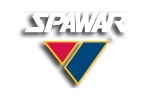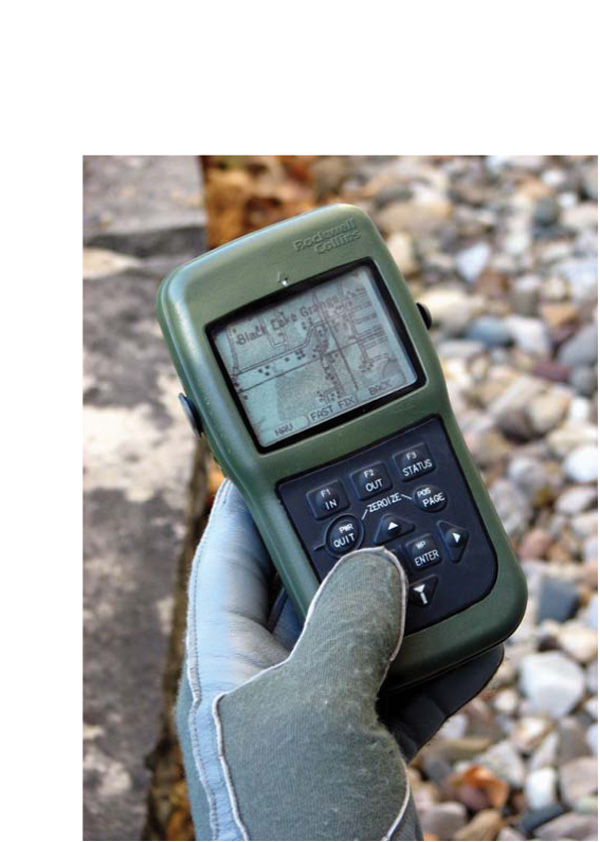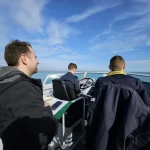
The Navy is preparing to buy a new Assured Positioning, Navigation and Timing (A-PNT) Navigation Suite and is asking industry to help it craft its acquisition approach by submitting ideas, products and potential solutions.
Specifically, the Space and Naval Warfare Systems Command (SPAWAR) is looking for “innovative ways to enhance the future navigation suite to navigate in a GPS denied environment.”
The Navy is preparing to buy a new Assured Positioning, Navigation and Timing (A-PNT) Navigation Suite and is asking industry to help it craft its acquisition approach by submitting ideas, products and potential solutions.
Specifically, the Space and Naval Warfare Systems Command (SPAWAR) is looking for “innovative ways to enhance the future navigation suite to navigate in a GPS denied environment.”
“Fleet operations could continue weeks at a time without reliable GPS information,” the agency explained in a program document. “An affordable family of navigation systems, coherently organized into a single System of Systems Architecture (SoSA) will be necessary to ensure that PNT information can still be generated within such an environment to a level that will facilitate mission success.”
Finding alternatives for when GPS is unavailable has become an area of intense interest to defense planners. The Defense Advanced Research Projects Agency (DARPA) is working on a wide variety of alternative navigation technologies, and the Army announced its interest in purchasing 50,000 eLoran receivers to support its own A-PNT program just this January.
Terry Halvorsen, the Department of Defense’s chief information officer, recently told Inside GNSS that the Pentagon intended to invest $5 million in research on eLoran receivers in fiscal year 2016.
Civil agencies are also looking at eLoran, particularly as a backup for the timing data GPS provides to the nation’s critical infrastructure. The ground-based eLoran system broadcasts signals, which are nearly impossible to jam, on a different frequency from that used by GPS.
But eLoran, as a terrestrial system that depends on precisely situated signal towers, is unlikely to be able to meet all the Navy’s needs. SPAWAR is asking companies to submit products or white paper descriptions of products and/or solutions “for the development and implementation” of an A-PNT suite.
The suite is expected to be an ensemble of navigation sensors and systems that may use internal and external references. SPAWAR added that it is “specifically interested in solutions that do not require an extra-platform data link to provide valid PNT information.”
The agency also wants the technology to work without a lot of manual intervention, according to the program document. The A-PNT architecture needs to “allow for the optimal navigation solution in both GPS uninterrupted and impeded environments without operator input.”
Military officials appear to be thinking broadly about what might work. An A-PNT solution, they wrote, could include sensors, systems, and software solutions and, if appropriate, the software could be integrated with, or even replace, current software.
Must Still Work with GPS
A-PNT, however, will need to integrate with current systems, which are and will continue to be based on GPS and inertial navigation.
“The Government does not intend that an A-PNT suite will replace any of the current programs of record,” the announcement says, “rather the Government is interested in alternative ways [to] acquire the navigation data these systems provide.”
That data should include some or all of the following:
-Three-dimensional position (location) of the sensor or system directly relatable to the WGS-84 reference frame
-Three-dimensional velocity
-Three-dimensional acceleration
-Three-dimensional jerk
-Pitch, pitch rate, and pitch acceleration
-Heading, heading rate, and heading acceleration
-Roll, roll rate, and roll acceleration
-Depth
-Precise time directly relatable to Universal Coordinated Time (UTC) as defined by the U.S. Naval
Observatory
-Precise and stable time interval
SPAWAR also wants its new suite to incorporate a certain amount of flexibility for future changes. For example, military officials are looking for sensors and systems that have external, non-proprietary interfaces.
Responses for the SPAWAR program are due by May 8. The solicitation number is SPAWAR_Headquarters_MKTSVY_10155E and can be found here.
A copy of a informational white paper describing the program can be found here.
After reviewing the submissions, SPAWAR will hold an industry day on June 2 in San Diego, California, to clarify requirements and answer questions. Those who respond to the RFI will have an opportunity in one-on-one sessions with SPAWAR representatives to present their products and/or solutions that address the capabilities described in the white paper.





